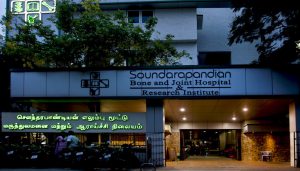Diskectomy is a surgical procedure that removes the damaged portion of a herniated disk in your spine.
This abnormal disk bulges and presses on the spinal cord, causing pains, numbness, or weakness. The pain can radiate down your arms and legs.
Diskectomy is more efficient for treating pains that spread to your arms or legs. It is less helpful when treating actual back pains or neck pains. If you have back pain or neck pain, you will find relief with more conservative treatments, such as physical therapy.
Your doctor can recommend discectomy for you only when the conservative, nonsurgical treatment fails or if your symptoms become worse. Diskectomy is often the first course of surgical intervention for a herniated disk. It is most commonly performed on an outpatient basis. It can also be performed as an open or endoscopic procedure.
A diskectomy is performed to relieve the pressure bulging disk places on a spinal nerve root or the spinal cord.
TYPES OF DISKECTOMY
There are different types of diskectomy:
- Standard, Open or Radical Diskectomy.
This is the removing of all or part of a herniated disk (a bulged, ruptured, or slipped disc nucleus that has been pushed into the spinal canal via a tear in the annulus), to prevent further complications in the spine.
It is the main surgical operation carried out to remove herniated vertebrae discs causing pressure in the nerves located around the lower spine.
Also known as a mini diskectomy, this is an invasive surgical procedure carried out on patients with a herniated disk (which exerts pressure on the nerve roots of the lower back).
Although minimally invasive, it can be used to remove the herniated disc, with a maximum positive impact.
Micro diskectomy is similar to a standard diskectomy, except that here, a microscopic glass is used to gain a better larger view of the lower spine and the nerves surrounding it. Here, smaller and less harmful incisions are made on the skin.
A percutaneous diskectomy is performed to treat a fractured disk by using a needle to reach the spinal cord, doing away with the necessity for slits or cuts in the skin.
It is a relatively safe procedure in lessening the effects of herniated discs on the spine and its connecting nerves, as well as the lower back as a whole.
It could also be used to treat sciatica (a pain affecting the lower back because of the stiffness of the nerves surrounding the lower spine, particularly the sciatic nerve).
- Lumbar Diskectomy or Laminectomy.
This uses small slits on the skin covering the lower back, to reach the region of the lumbar spine and fix herniated discs.
Lumbar diskectomy uses general anesthetics to numb the patient or make him/her sleep throughout the surgical operation, to eliminate pains during the procedure. Laminectomy also removes part of the lamina (the roof of the spinal canal, where the nerves surrounding the lower spinal cord leave to lower parts of the human body), to create a free space for the nerves to travel down.
- Anterior Cervical Diskectomy and Fusion (ACDF).
This is a surgical operation that involves the removal of a herniated disc in the upper spine or neck area. After taking an anesthetic to numb pains, an incision will be directly slit on your throat to locate the disturbing disc. Afterward, a transplant is put in place to join the bones above and below the disc, to cover it up and stitch the neck.
This is used to put off excessive pain in the lower back, this surgical procedure is carried out on the lamina to mitigate compression on the nerves surrounding the lower spine. It is also medically known as laminotomy.
CANDIDATES FOR DISKECTOMY
You may recommend for diskectomy if:
- You cannot stand or walk because of nerve weakness.
- You have tried conservative treatment such as physical therapy or steroid injections, but they could not improve your symptoms after 6─12 weeks.
- Pain radiating into your buttocks, legs, arms or chest becomes too intense to manage.
SCIATICA
This is the pain caused by irritation of the sciatic nerve (a large nerve that starts in the lower back, running through the buttocks and down the lower limb).
The sciatic nerve is irritated when your spine is damaged, causing a herniated disk to bulge out and put pressure on it. This pressure develops sciatica that radiates through the buttocks, legs, arms, and chest.
The sciatic nerve is the longest and widest nerve in the human body. It runs from the lower back, through the butt, and down the legs, ending just below the knee. It controls several muscles in the lower legs, supplying sensations to the skin of the feet and the majority of the lower legs.
Sciatica is a symptom of a problem involving the sciatic nerve. Most cases of sciatica respond to self-care measures, including:
- Exercises such as walking or light stretching.
- Over-the-counter (OTC) painkillers like ibuprofen.
- Hot or cold compression packs, available to purchase online.
Alternating between the two packs (hot and cold) can be helpful.
Where symptoms do not respond to self-care and other treatments, surgery may be an option.
Surgical operations that can help with sciatica include lumbar diskectomy or laminectomy.
RISKS OF DISKECTOMY
As with any surgery, diskectomy has some risky complications, some of which are futuristic. They include:
- Pains.
- Bleeding during or after surgery.
- Blood clotting.
- Spinal fluid leakage.
- Infection at the surgical site or vertebral bones.
- Injury to the protective layer surrounding the spine.
- Injured blood vessels or nerves, in or around the spine.
PREPARATION
- Your doctor will give you specific instructions.
- Avoid eating and drinking for a certain period before surgery.
- You may have to keep your jewelry at home before going for surgery.
- If you are on blood-thinning medications, you may need to adjust your dosing schedule before surgery.
THE DISKECTOMY PROCEDURE
| Specialty |
Neurosurgeon and orthopedic surgeons |
| Duration |
About 1─3 hours |
Two main diskectomy procedures are stated below:
Standard Diskectomy.
- The surgeon makes an incision to provide a clear view of the disk.
- He/she then uses surgical instruments to trim away part of the disk.
Open diskectomy often includes a procedure called laminectomy to remove part of the outer arch (lamina) of the vertebra. By this, pressure on the nerves is relieved.
Laminectomy (Lumbar Diskectomy) Procedure.
- Performed while under general anesthetics.
- The surgeon will clean over the surgical site with an antiseptic solution.
- He/she will create a small incision in the middle of your back or neck.
- He/she will move your skin, muscles, and ligaments to the side, to get a better view.
- He/she will remove part or all of the lamina bones on your spine.
- Then, he/she will remove bone spurs or small disk fragments.
- He/she will close the incision with stitches.
- Then, he/she will cover the incision with sterile bandages.
Your surgeon may also perform a spinal fusion by connecting one or two bones in the back to better stabilize the spine, during the procedure.
After the Diskectomy Procedure,
- Your doctor may ask you to get up and walk around (except you had a spinal fusion done).
- You may remain in the hospital for about one to three days.
- You should avoid strenuous activity and lifting weights.
- You should be careful when climbing stairs.
- Increase your activities, such as walking, gradually.
- Honor all follow-up appointments according to schedule.
- Be watchful and report any adverse health developments to your doctor.
CAUTIONS
Until your doctor says otherwise:
- Do not scrub over the incision site while showering, or any this time.
- Do not apply lotion or creams over the incision.
- Avoid bathtubs, hot tubs, and swimming pools.
Your surgeon will give you specific instructions on your wound management. Call your doctor immediately you observe the following:
- Swelling on or near the incision site.
- Heat, draining, or redness at the incision site.
- You have difficulty breathing.
- Chest pains.
- Tenderness or swelling in the legs.
- Difficulty urinating.
- A fever of 100°F or above.
- A loss of bowel or urinary control.
RESULTS
Although diskectomy may not offer a permanent cure, it reduces herniated disk symptoms in some people who have clear signs of nerve compression, such as redialing pain. However, it does nothing to reverse the process that causes the disk to become herniated in the first place.
A laminectomy will often cause many symptoms of spinal stenosis without the ability to prevent future spinal problems. People who had spinal fusion are more likely to have spinal problems in the future.
The diskectomy recovery time varies from one to four weeks, depending on the underlying health condition of the patient and the general health.
CONCLUSION
The success rate for diskectomy spine surgery is generally high, with one extensive medical study showing good or excellent results overall for 84% of people who get through the procedure.
FAQ
Is herniated disk surgery worth it?
Disc surgery is faster and works better for bad pains, a large US study discovered. The study shows that patients with a slipped or ruptured herniated disk will not get worse or become paralyzed if they do not have the surgery. Instead, they can expect to get better over time.
How do you sleep after a diskectomy?
It is generally okay after back surgery to sleep in whatever position is most comfortable. Some prefer sleeping on one side while others prefer with a pillow between their knees and/or behind them to support the back. Lay face-up on the bed, as this takes off the stress from the lower back.
How long does it take for a herniated disc to be reabsorbed?
The average time it takes for a herniated disk to heal is between 4 and 6 weeks, but it can get better within a few days, depending on how severe the herniation was and where it occurred. The biggest factor in healing a herniated disk is time because it most often resolves on its own.
Can you run after diskectomy?
Running, jogging, using the treadmill, elliptical, and swimming laps is usually possible within 4 and 6 weeks after diskectomy. Again, those heavy activities are possible within 4 and 6 months after surgery.
What can you not do after back surgery?
No matter what type of back surgery you are undergoing, and no matter how well-controlled our pain is, it is vital that you avoid bending, lifting weights, and twisting. Bending from the waist, lifting more than 10 pounds, and twisting your torso, all put undue pressure on your vulnerable spine.































































